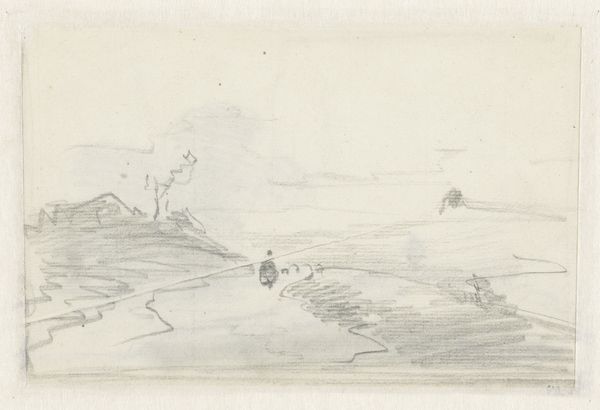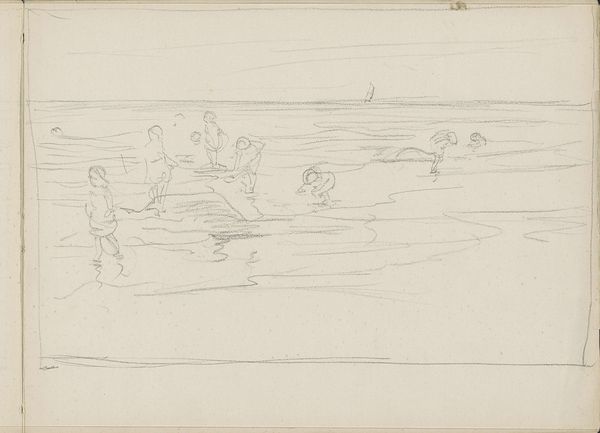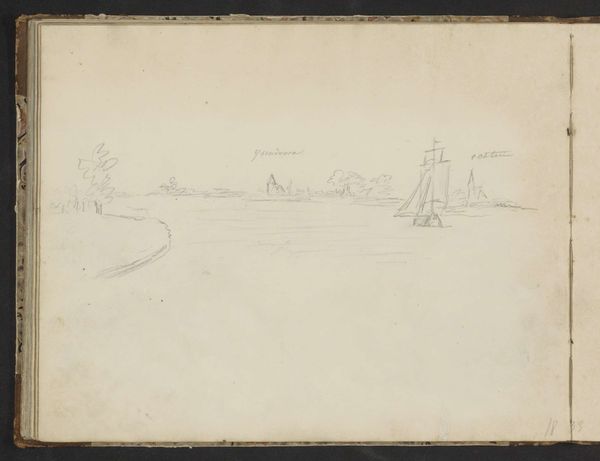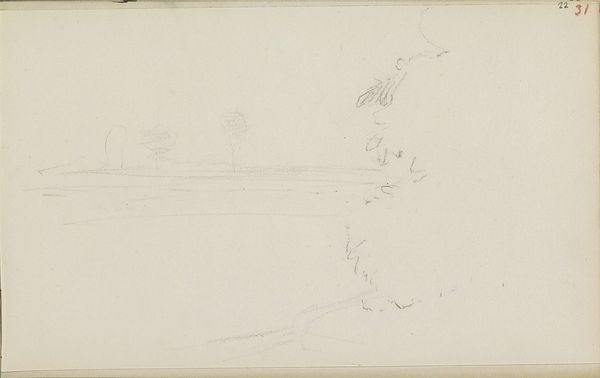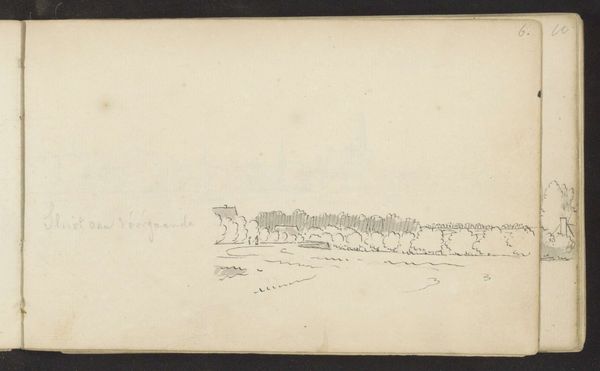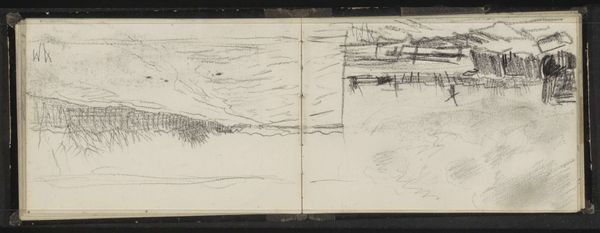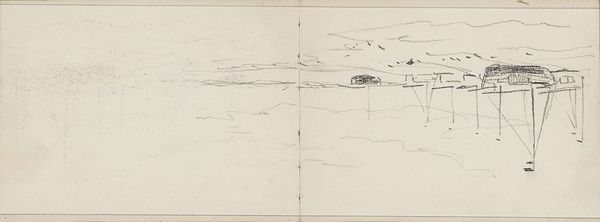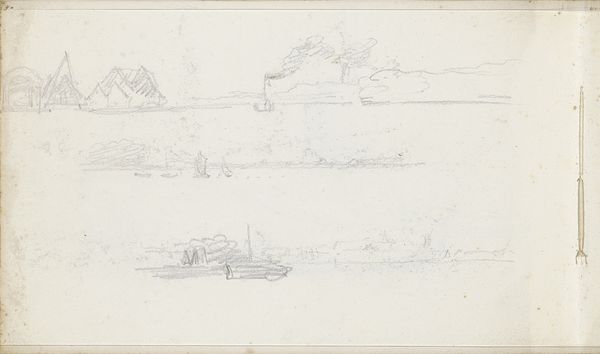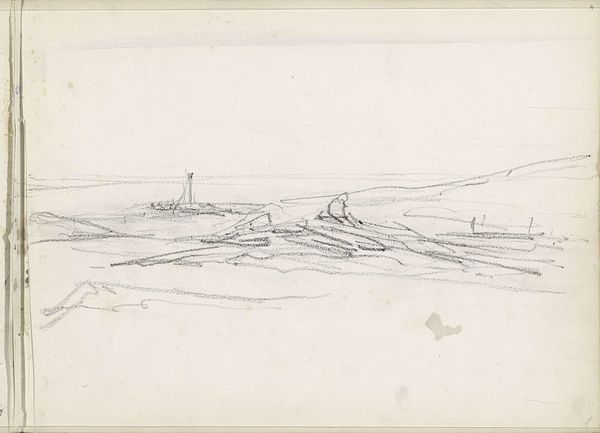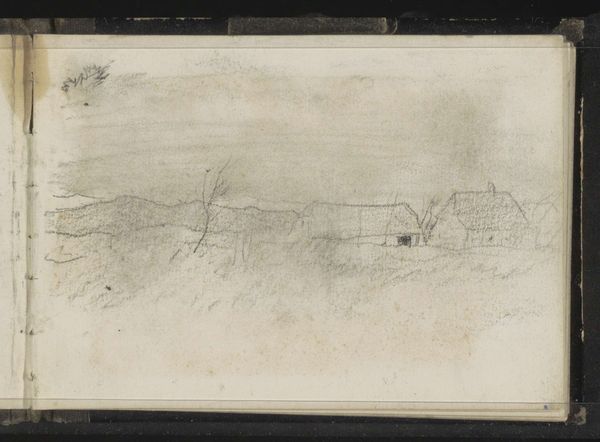
Copyright: Rijks Museum: Open Domain
Editor: Here we have Isaac Israels' "Recreanten op het strand en in zee," created between 1875 and 1934. It's a pencil drawing, and I find the vastness of the empty space on the page really striking in contrast to the clustered figures in the distance. What do you see in this piece from a formalist perspective? Curator: Immediately, I’m drawn to the stark contrast between the defined upper portion and the expansive blank space below. Consider how the artist uses line—economical strokes that suggest form and movement, but also absence. It brings a certain energy to the artwork, and what looks like a tension to be decoded. Notice how the composition relies on a stark division: the upper band where figures and a distant horizon reside, juxtaposed against the void of the paper itself. It pushes our awareness of positive and negative space to its limit, and emphasizes the flatness of the page. Editor: So you are saying the tension between what is actually there and the emptiness helps create the drawing? Curator: Precisely. Consider the function of the horizon line, its gentle curve. Is it grounding? Or is it subtly unsettling, making us question the stability of the scene? Note also the artist's restraint. A mere suggestion of human figures, of sea, of sky. This very reduction amplifies the fundamental qualities of drawing itself. Are these lines mere depiction, or something more symbolic in the artist's thinking? Editor: I hadn't thought about how the lack of detail contributes to the work's effect, creating so much mood using seemingly so little! I have definitely got a much greater insight by listening to your expert opinion. Curator: It is the reduction that reveals the pure formal relationships, no?
Comments
No comments
Be the first to comment and join the conversation on the ultimate creative platform.
